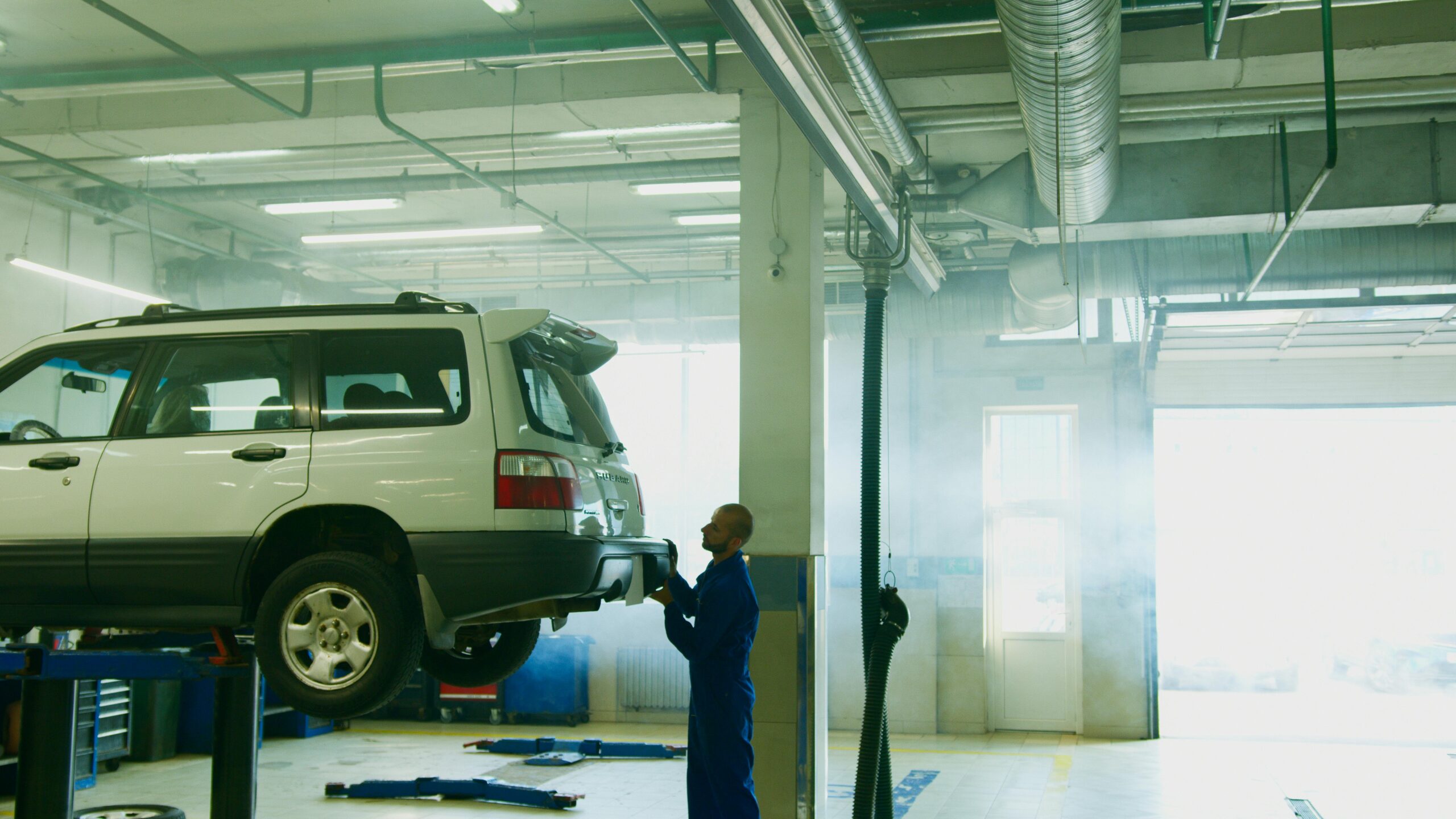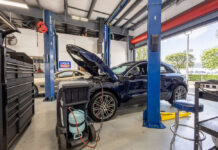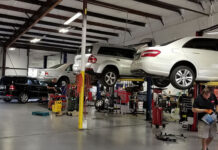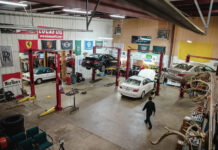When summer heat hits, there’s nothing worse than discovering your auto air conditioning isn’t working. Did you know that nearly 80% of drivers experience issues with their vehicle’s air conditioning system at some point? It’s true! The sweltering sun can make your driving experience unbearable, raising the question: Is it time for auto air conditioning repair? Many people ignore signs of a struggling AC, but those little clues can lead to larger problems down the road. From strange noises to insufficient cooling, these issues can escalate quickly. Not sure if your AC needs a check-up? If you notice any weird smells or if your car air conditioner is blowing warm air, don’t wait! Delaying repairs can lead to costly fixes. Whether you’re planning a road trip or just want to enjoy a comfortable ride, understanding when to seek out car AC repair is crucial. In this guide, we’ll explore common auto AC problems, how to recognize them, and why timely maintenance can save you money and hassle. Ready to dive in? Let’s uncover the secrets to keeping your air conditioning system in top shape!
10 Warning Signs Your Car’s AC Needs Immediate Repair: Don’t Ignore These Red Flags!
When it gets hot outside, you know what’s the last thing you wanna deal with? A busted auto air conditioning. I mean, who wants to sweat bullets inside their car, right? So, let’s dive into the world of auto air conditioning repair and figure out how to keep your cool (literally, not figuratively).
First off, let’s just get this outta the way: A/C systems are complex. Like, why do they have to be so complicated? It’s like they want to make you feel like a mechanic just to fix a simple problem. If your car’s air isn’t blowing cold air, there could be a million reasons why. But, like, don’t freak out just yet. Here’s a list of common issues that could be causing your A/C woes:
- Low refrigerant levels: If you don’t have enough refrigerant, your A/C ain’t gonna work. It’s like trying to run a marathon without water. Not fun.
- Clogged filters: You wouldn’t believe what kind of junk can get stuck in those filters. Dust, leaves, maybe a snack you dropped last month. Who knows?
- Compressor failure: The compressor is like the heart of the A/C system, and if it gives out? Well, you’re in for a hot ride.
- Electrical issues: Sometimes, there’s just a little gremlin messing with the wires. I’m not really sure why this matters, but it can totally throw the whole system off.
So, if you’re feeling brave enough to tackle auto air conditioning repair, here’s a step-by-step guide to help you out. Or, you know, at least give it a shot.
- Check the refrigerant levels: First things first, pop the hood and locate the A/C service ports. You’ll need a pressure gauge, which you can pick up at any auto parts store. If the gauge reads low, it might be time to recharge that system.
| Refrigerant Level | Action Required |
|---|---|
| Low | Recharge the refrigerant |
| Normal | Move to the next step |
| High | Consult a professional |
Inspect the cabin air filter: A dirty filter can really mess with airflow. So, if you can’t remember the last time you changed it, it’s probably time. Just pull it out, give it a look, and if it looks like it’s been through a war zone, replace it. Maybe it’s just me, but I feel like it’s one of those things that gets forgotten until it’s too late.
Examine the compressor: Turn your A/C on and listen carefully. If you don’t hear that click or the compressor doesn’t kick in, it’s time to check the fuses and relays. You can find those in the fuse box, and if they’re blown, just replace ‘em. Simple, right? Or not, depending on how handy you are.
Look for leaks: If you’ve recharged the system and it’s still not working, you might have a leak. You can buy a leak detection kit, or just look for oily spots around the hoses and connections. If you find one, it’s best to call in a pro unless you wanna play a game of “fix it and hope for the best”.
Check the electrical system: Sometimes it’s not the A/C at all, but the electrical system that’s causing issues. If you’re not getting power to your compressor, you might have a wiring issue or a blown fuse. It’s like the A/C system’s way of saying, “Hey, I need some love here!”
And here’s a fun fact: Did you know that running your A/C can actually help defog your windows? Crazy, right? It’s like a two-for-one deal. But, like, who wants to think about defogging windows when you’re sweating like a pig?
Here’s a quick table that summarizes the common symptoms and potential fixes for your auto air conditioning repair needs:
| Symptom | Possible Cause | Suggested Action |
|---|---|---|
| No cold air | Low refrigerant | Recharge refrigerant |
| Weak airflow | Clogged filter | Replace air filter |
| Strange noises | Compressor issues | Inspect or replace |
| System not turning on | Electrical problems | Check fuses and wiring |
So, what do you think? Is tackling auto air conditioning repair something you wanna do yourself, or would you rather leave it to the pros? Honestly, it can be a little hit or miss. It’s all about your comfort level with car repairs.
In the end, whether you’re sweating it out in
The Ultimate Guide to DIY Auto Air Conditioning Repair: Save Money with These Expert Tips!
So, let’s dive into the wild world of auto air conditioning repair. You know that moment when you hop into your car, ready to drive off, and—surprise!—the air conditioning is blowing hot air? Yeah, that feeling is like stepping into a sauna, but not the relaxing kind. It’s like, why even bother with the A/C if it’s not gonna work, right? Not really sure why this matters, but if you’re like most people, the heat can be unbearable.
First up, let’s talk about the basics of your car’s air conditioning system. It’s not rocket science, but it sure can feel like it! The system usually has four main parts: the compressor, the condenser, the evaporator, and the expansion valve. Each of these components plays a crucial role in keeping your car cool. If one of them is broken or acting funny, you might as well be driving a furnace on wheels.
Here’s a little breakdown of what each part does:
| Component | Function |
|---|---|
| Compressor | Pressurizes the refrigerant and circulates it |
| Condenser | Cools down the refrigerant, turning it back into liquid |
| Evaporator | Absorbs heat from the car cabin, making the air cooler |
| Expansion Valve | Regulates refrigerant flow into the evaporator |
Now, you might be thinking, “Okay, cool, but how do I know which part is the issue?” Good question! It could be any one of these parts, or a bad connection, or even just low refrigerant levels. Maybe it’s just me, but I feel like car problems always happen at the worst possible times, like right before a long trip or during a heatwave.
Next, let’s get into some common signs that your auto air conditioning repair might be needed. If your A/C is making weird noises, like clanking or hissing, then you definitely have a problem. Those noises, they’re not music to your ears, they’re more like a warning that says, “Hey buddy, something ain’t right here!”
Also, if you notice that the air isn’t as cold as it used to be, or if it smells funny (like, not the good kind of funny), that’s another red flag. It could be mold or mildew growing in the system, which is just gross. Just imagine that: you’re driving along, feeling the breeze, and you catch a whiff of something that smells like a gym sock. No thanks.
Now, if you’re feeling adventurous and want to tackle some auto air conditioning repair yourself, here’s a quick how-to list to get you started:
- Check the refrigerant level: This is usually the first step. If it’s low, you might just need to recharge it.
- Inspect the hoses: Look for any visible leaks or cracks. If it looks worn out, it probably is.
- Test the compressor: Turn the A/C on and listen. If it’s not kicking in, then you might have a compressor issue.
- Examine the cabin air filter: If this baby is clogged, it can restrict airflow, making your A/C less effective. Just swap it out for a new one.
But hey, if all this sounds like too much work, then you might want to just take it to a pro. You know, those folks who actually know what they’re doing? They’ll have the fancy tools and experience that we mere mortals lack. And you won’t have to spend your Saturday afternoon wrestling with your car’s insides.
Oh, and let’s not forget about the cost. Here’s a rough idea of what you might be looking at with some common repairs:
| Repair Type | Average Cost (USD) |
|---|---|
| Refrigerant recharge | $100 – $200 |
| Compressor replacement | $800 – $1200 |
| Condenser replacement | $500 – $800 |
| Evaporator replacement | $700 – $1500 |
Keep in mind, these prices can vary greatly depending on where you live and the make and model of your car. Just a heads up, if you have a luxury vehicle, you might need to take a deep breath before seeing the bill.
In the end, whether you decide to roll up your sleeves or hand it off to a mechanic, just remember: your comfort matters. Driving around in a car that feels like an oven isn’t just annoying, it can be dangerous, especially in extreme heat. So, keep an eye (and ear) on your A/C system, and hopefully, you won’t find yourself sweating bullets on your next drive.
And just like that, you’re
How to Choose the Right Auto Air Conditioning Repair Service: 5 Key Questions to Ask!
Auto Air Conditioning Repair: A Journey Through the Cool and the Hot
So, you’re cruisin’ down the road, wind in your hair, and suddenly your car’s air conditioning decides to throw a tantrum. Yep, that’s right. It just stops blowing that sweet, sweet cold air. Now you’re left in a hot box, and it feels like you’re riding in a sauna. Not really sure why this matters, but if you’re like me, that’s just not gonna fly. Let’s dive into the wild world of auto air conditioning repair and see what’s up.
First things first, what even is this air conditioning thing? Well, it’s a system that cools down the air inside your car, making those sweltering summer days bearable. It works by circulating refrigerant through the system, absorbing heat from the cabin and releasing it outside. Easy peasy, right? Not so fast. The moment something goes wrong, you might as well be driving a brick oven.
Common Problems You Might Face
Refrigerant Leaks: This is like the most common issue ever. If your refrigerant is leaking, then your A/C is gonna blow hot air. You’ll probably notice some hissing or see oily spots under your car. Not good.
Compressor Issues: The compressor is the heart of your A/C system. If it’s not working, nothing else will either. You might hear strange noises or the A/C clutch just won’t engage. Bummer, right?
Electrical Failures: Modern cars are like rolling computers and sometimes, the electrical components fail. Fuses blow, relays go bad, and suddenly your A/C is as useful as a chocolate teapot.
Clogged Filters: If your cabin air filter is clogged, well, good luck getting any cool air. It’s like trying to drink a milkshake through a straw that’s too small. Frustrating!
Faulty Blower Motor: The blower motor is what pushes the air into your cabin. If this goes kaput, you might as well be driving with the windows down, which defeats the whole purpose of having A/C.
So, now that you know what might be wrong, what next? Well, you could try the DIY route, but let’s be real. If you’re not a car whisperer, you might just make things worse. Here’s a handy-dandy table of what you might need to check:
| Problem | Possible Cause | DIY Fixes |
|---|---|---|
| No cold air | Refrigerant leaks | Check for visible leaks or take to a pro |
| Strange noises | Bad compressor | Might need replacement, take it to a shop |
| No air blowing | Blower motor failure | Check the fuse or replace blower motor |
| Weak airflow | Clogged air filter | Replace the cabin air filter |
| A/C light on | Electrical issue | Check fuses and relays |
Now, if you decide to go the professional route, it’s essential to find a good mechanic. Not all heroes wear capes, but a good mechanic might as well. You want someone who knows their stuff about auto air conditioning repair. Check reviews, ask your friends, or even look online. Just don’t take your car to the first place you see. Trust me, you don’t want to end up with a mechanic who thinks “A/C” stands for “All Crappy.”
What to Expect When Getting A/C Repaired
When you take your car in for auto air conditioning repair, you can expect a few things. First, they’ll probably hook it up to some fancy diagnostic machine. Then they’ll charge you for that, even if they don’t find anything wrong. (Gotta love those diagnostic fees, huh?) After that, they might suggest a bunch of repairs. Some might actually be necessary, and others might just be them trying to make a buck. That’s why it’s good to get a second opinion. Maybe it’s just me, but I feel like mechanics sometimes see dollar signs instead of cars.
Here’s a quick list of steps you can expect:
- Initial inspection (with a fee, of course)
- Diagnosis and recommended repairs
- Approval for work (don’t sign anything until you understand it)
- Completion of repairs
- Final inspection and testing
And bam! Suddenly, you’re back on the road with cool air blowing in your face again. Just remember to keep an eye on your A/C system. Regular maintenance can save you a ton of cash down the road.
So, whether you’re dealing with a full-blown A/C crisis or just want to make sure your car stays chill, knowing a bit about **auto air conditioning
Top 7 Common Auto Air Conditioning Problems and How to Fix Them Like a Pro
So, let’s dive into the world of auto air conditioning repair. You know, that thing you never think about until it’s blazing hot outside, and your car’s AC decides to take a permanent vacation. Not really sure why this matters, but it’s like, one minute you’re cruising with cool air and the next, you’re sweating like a popsicle in the sun.
First off, let’s talk about why your AC stops working. There could be a million reasons, or maybe just a few. Who knows? But, here’s a list of some common issues that might be happening with your system:
- Refrigerant leaks – This is like the biggest culprit. Your car’s AC needs refrigerant to cool the air, and if there’s a leak, it’s basically running dry.
- Compressor failure – If the compressor is broken, well, then your AC is just a glorified fan.
- Electrical issues – Sometimes, it’s just a blown fuse or faulty wiring. Technology, am I right?
- Clogged filters – This one’s easy to overlook. If the filter’s dirty, it’s like trying to breathe through a straw with a milkshake in it.
Now, you might be wondering about the signs your AC is in trouble. Maybe it’s just me, but I feel like you should pay attention to these red flags:
- Weak airflow – If it’s blowing like a gentle breeze instead of a cool wind, Houston, we have a problem.
- Strange noises – If your AC sounds like it’s auditioning for a horror movie, you should probably get it checked.
- Bad smells – If your car smells like a wet sock or something died in there, it’s time to call a pro.
- Inconsistent temperatures – One minute it’s Arctic, the next it’s like a sauna. Not ideal, folks.
So, you’ve noticed some issues. What’s next? Not gonna lie, you could either take the DIY route or call in the pros. Here’s a simple breakdown of what you might need for basic auto air conditioning repair if you’re feeling adventurous:
| Item Needed | Purpose |
|---|---|
| Refrigerant | To refill the system |
| Manifold gauge set | To check pressure levels |
| Vacuum pump | To remove moisture from the system |
| AC recharge kit | To add refrigerant |
If you’re diving into the DIY world, first things first – safety. You don’t want to end up in a scene from a slapstick comedy. Make sure your car is off and cool before you start poking around.
Now, here’s a fun fact: did you know that some folks think they can just add refrigerant without checking for leaks? Spoiler alert: that’s not how it works. You gotta find the leaks first, or you’ll just be pouring money down the drain. Maybe it’s just me, but it’s like filling a bathtub with the drain open.
If you decide to go the professional route, you might be thinking about how much it’ll cost. Well, buckle up, because prices can range from $100 to $1,000, depending on what’s wrong. Here’s a rough estimate of costs you might run into:
- Refrigerant recharge – $100 to $150
- Compressor replacement – $500 to $1,000
- Electrical repair – $100 to $300
- Filter replacement – $50 to $100
And don’t forget, some places might charge you just to look at it. It’s like paying a cover charge to get into a bar. You’re not even sure if you’ll like the drinks, but hey, you’re already there.
So, you’re likely wondering how to prevent all these AC issues in the first place. Here’s a little list of preventative measures that might keep your AC in tip-top shape:
- Regular maintenance – Get your AC checked at least once a year. It’s like a check-up for your car.
- Change the filters – A dirty filter can ruin everything, so keep an eye on that.
- Use the AC regularly – Even in winter, turn it on for a bit. Keeps the seals lubricated or something.
And there you have it, folks. A wild ride through the land of auto air conditioning repair. It’s a bit chaotic, sure, but isn’t that what life’s all about? Just remember, whether you’re a DIY warrior or a “let’s call the pros” kind of person, knowing a bit about your AC can save you time, money, and possibly some sweat!
Beat the Heat: Essential Maintenance Tips to Keep Your Car’s AC Running Efficiently All Summer!
Auto air conditioning repair can be a real pain in the neck, right? Like, you think you’re cruising along, windows down and music blasting, then bam! Your auto air conditioning decides to take a vacation—without you! I mean, what’s the deal with that? Anyway, let’s dive into the nitty-gritty of auto air conditioning repair and what you need to know.
First off, you gotta understand how your auto air conditioning system works. It’s like a magical box that keeps you cool during those hot summer days. So, the system includes a compressor, condenser, evaporator, and some hoses and whatnot. You can’t really have one without the other, not like peanut butter and jelly, but you get the picture.
Here’s a quick breakdown of the components:
| Component | Function |
|---|---|
| Compressor | Pressurizes refrigerant, circulates it |
| Condenser | Releases heat, cools down refrigerant |
| Evaporator | Absorbs heat from the cabin, cools air |
| Hoses | Carries refrigerant between components |
So, if one of these parts goes kaput, you’re gonna have a bad time. And, you know, auto air conditioning repair isn’t exactly cheap. Not really sure why this matters, but it’s like getting a root canal versus a simple filling, ya know?
Now, maybe it’s just me, but I feel like most people don’t even realize their AC is broken until they’re sweating bullets. You get in your car, flip on the AC and nothing happens. It’s like, come on! You had one job! So, what are the common issues? Well, here’s a list of some problems you might encounter:
- Refrigerant Leaks: This is, like, the most common issue. If your refrigerant is leaking, it’s not gonna cool your car. Simple as that.
- Compressor Failure: If the compressor ain’t working, you’re basically just blowing hot air. Literally.
- Electrical Issues: Sometimes it’s the wiring or a blown fuse. Like, who even knew that could happen?
- Clogged Condenser: If dirt and debris are clogging the condenser, good luck getting any cold air.
- Faulty Thermostat: This is where the temperature gets all wonky, and you’re left guessing if it’s hot or cold.
Look, if you think you can fix it yourself, you might be right. But also, maybe not. You could end up making it worse. So, here’s a little DIY guide for the brave souls out there.
DIY Auto Air Conditioning Repair Steps
- Step 1: Check the refrigerant level. You can buy a gauge at an auto parts store. Just make sure to wear gloves, ‘cause refrigerant is no joke!
- Step 2: Inspect the compressor. If it’s making weird noises, it’s probably not a good sign. Just saying.
- Step 3: Look for leaks. You can use UV dye or a simple soapy water solution. If you see bubbles, it’s leaking.
- Step 4: Check the fuses. They’re usually labeled under the dashboard. Just don’t pull the wrong one and end up with no lights, okay?
- Step 5: Clean the condenser. A little dirt won’t hurt, but a lot? Big problem.
But hey, if you’re not feeling super handy, just take it to a professional. They usually have like a ton of experience and tools that you probably don’t. Plus, it saves you from accidentally turning your car into a giant sauna.
Here’s a quick comparison of DIY vs. Professional Repair:
| Aspect | DIY Repair | Professional Repair |
|---|---|---|
| Cost | Usually cheaper | More expensive |
| Time | Could take hours or days | Often quicker, depending on the issue |
| Tools Required | Basic tools, maybe a gauge | Specialized tools, diagnostic equipment |
| Knowledge Required | Somewhat basic understanding | Extensive knowledge and experience |
So, what’s the bottom line? If your auto air conditioning is on the fritz, don’t just roll the window down and hope for the best. You gotta deal with it! Whether you go the DIY route or call in the pros, getting your auto air conditioning repair sorted out is crucial for those hot days ahead.
Lastly, don’t forget to maintain your system. Change the cabin air filter regularly, and keep an eye out for strange noises or smells. It’s like your car is trying to tell you something, and you don
Conclusion
In conclusion, proper auto air conditioning repair is essential for maintaining comfort and safety during hot weather. We discussed the common signs that indicate your AC system may need attention, such as insufficient cooling, strange noises, and unusual odors. Regular maintenance, including checking refrigerant levels and inspecting components, can prevent costly repairs down the line. It’s crucial to choose a reputable mechanic who specializes in automotive AC systems to ensure thorough diagnostics and effective solutions. Remember, neglecting your vehicle’s air conditioning can lead to more significant issues, impacting not just comfort but also vehicle performance. If you’ve noticed any warning signs or if it’s been a while since your last inspection, don’t hesitate to schedule a check-up with a professional today. Keeping your AC system in top shape will enhance your driving experience and extend the lifespan of your vehicle. Stay cool on the road!








